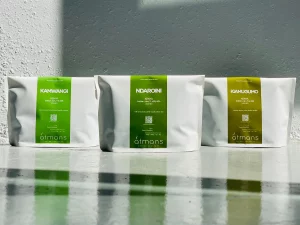
The Role of Shade-Grown Coffee in Preserving Biodiversity
Table of Contents
- What is Shade-Grown Coffee?
- The Environmental Benefits of Shade-Grown Coffee
- 1. Habitat Preservation
- 2. Soil Health
- 3. Carbon Sequestration
- 4. Water Conservation
- How Shade-Grown Coffee Supports Biodiversity
- 1. Protecting Endangered Species
- 2. Supporting Pollinators
- 3. Creating a Balanced Ecosystem
- Challenges of Shade-Grown Coffee
- 1. Lower Yields
- 2. Labor-Intensive
- 3. Market Awareness
- How to Support Shade-Grown Coffee
- A Win-Win for Farmers and the Environment
- The Future of Coffee and Biodiversity
- Conclusion
The Role of Shade-Grown Coffee in Preserving Biodiversity
- Adam Smith
- 12-01-2025
- 12-01-2025
- 907 views
- Coffee Beans

In a world where coffee is one of the most consumed beverages, the way it is grown plays a crucial role in the environment. Shade-grown coffee, a method that incorporates biodiversity-friendly practices, has emerged as a sustainable alternative to sun-grown coffee. But what exactly is shade-grown coffee, and how does it contribute to preserving biodiversity? Let’s dive into the benefits, challenges, and the importance of this method for the planet and its ecosystems.
What is Shade-Grown Coffee?
Shade-grown coffee is cultivated under a canopy of trees, mimicking the natural environment of coffee plants. Unlike sun-grown coffee, which requires clear-cutting forests to maximize yields, shade-grown coffee grows in harmony with existing ecosystems. This method not only supports coffee production but also helps sustain a rich diversity of plant and animal species.
The Environmental Benefits of Shade-Grown Coffee
1. Habitat Preservation
Shade-grown coffee plantations serve as habitats for countless species of birds, insects, and mammals. The canopy of trees provides food, shelter, and migration corridors for wildlife, making these farms biodiversity hotspots.
2. Soil Health
The natural mulch created by falling leaves enriches the soil, reducing the need for chemical fertilizers. It also prevents soil erosion and maintains the integrity of the land.
3. Carbon Sequestration
Trees in shade-grown coffee plantations absorb carbon dioxide, helping to mitigate climate change. These plantations act as carbon sinks, offsetting the greenhouse gases produced in other agricultural practices.
4. Water Conservation
The canopy slows down rainwater runoff, allowing it to seep into the soil and replenish underground water sources. This process reduces water wastage and prevents floods.
How Shade-Grown Coffee Supports Biodiversity
1. Protecting Endangered Species
Shade-grown coffee farms often overlap with biodiversity hotspots, providing a safe haven for endangered species like the jaguar, howler monkey, and numerous bird species.
2. Supporting Pollinators
The presence of native plants and trees attracts pollinators like bees and butterflies, which are essential for the reproduction of many crops, including coffee itself.
3. Creating a Balanced Ecosystem
With a variety of plants and animals coexisting, shade-grown farms foster a balanced ecosystem. Predators naturally control pests, reducing the need for chemical pesticides.
Challenges of Shade-Grown Coffee
1. Lower Yields
Shade-grown coffee typically produces smaller yields compared to sun-grown methods. This can make it less appealing to farmers focused on high-volume production.
2. Labor-Intensive
Maintaining a shade-grown coffee farm requires more manual labor, from pruning trees to managing diverse plant species.
3. Market Awareness
Consumers often lack awareness about the benefits of shade-grown coffee, making it challenging for farmers to secure premium prices for their sustainable efforts.
How to Support Shade-Grown Coffee
- Buy Certified Coffee: Look for certifications like Rainforest Alliance, Bird Friendly, or Smithsonian Migratory Bird Center to ensure your coffee is shade-grown.
- Educate Yourself: Learn about the origins of your coffee and the impact of your choices on the environment.
- Advocate for Change: Encourage coffee brands and retailers to source shade-grown coffee.
A Win-Win for Farmers and the Environment
Many shade-grown coffee farmers practice agroforestry, combining coffee cultivation with other crops like fruits, spices, and timber. This diversification provides them with additional income streams while preserving the environment.
The Future of Coffee and Biodiversity
As climate change intensifies, the need for sustainable farming practices like shade-grown coffee becomes more critical. Supporting this method not only helps preserve biodiversity but also ensures a future where coffee can thrive in harmony with nature.
Conclusion
Shade-grown coffee is more than just a farming method; it’s a commitment to the planet and its ecosystems. By choosing shade-grown coffee, we can support biodiversity, fight climate change, and enjoy a cup of coffee that tastes as good as it is sustainable.






















